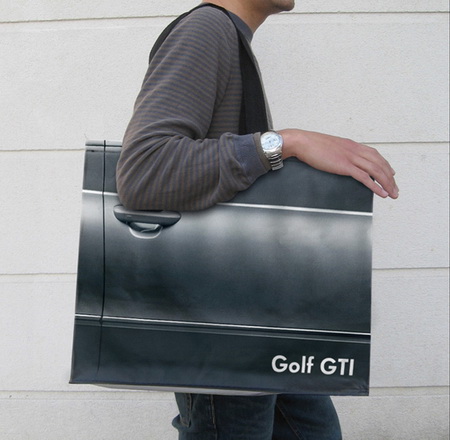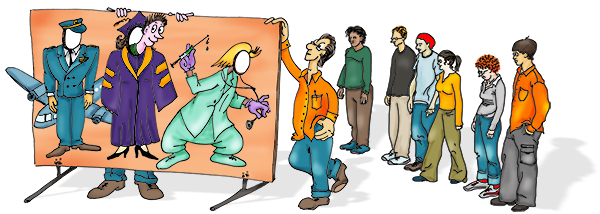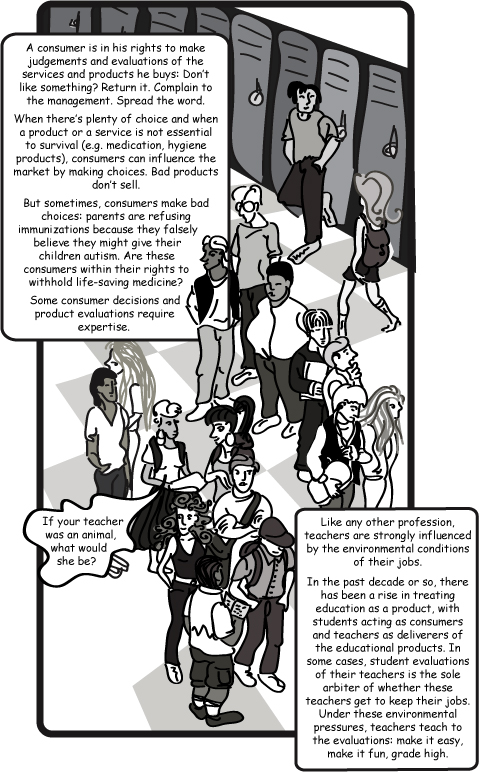BBC Staff, (2010). “Morality is modified in the lab.” BBC Online. Visited on October 02, 2010: http://news.bbc.co.uk/2/hi/health/8593748.stm. This article highlights a study that proves that human moral judgment can be modified by disrupting a specific area of the brain by applying magnetic pulses. For example, most of us would agree that it is morally unacceptable for a man to let his girlfriend walk across a bridge he knew to be unsafe. If he did not know it was unsafe, and the girlfriend did not make it safely across the bridge, we would not hold the man responsible for letting her cross the bridge. After a magnetic pulse is applied to a certain area of our brains we would think differently—Whether or not the man knew it to be unsafe, we would think it was morally acceptable for the man to let his girlfriend cross the bridge if she made it safely across. If she didn’t, we would feel it was morally unacceptable, regardless of whether or not he knew it to be unsafe. This shows how the judgment can be influenced to become outcome based rather than intention based. On Concept: If the reverse were possible, that is morally questionable…
Ethnographic & User Data
Ethnographic & User Data, Featured, Interface Design, Pipsqueak Articles, Product Design Strategy
Emotional Design
by Olga Werby •

Product design is not just about usability. How we feel about a product makes a lot of difference. The research shows that two identical applications—with similar failure rate, but with a different take on dialogue box writing—result in very different perceptions of usability by its audience. The application with polite dialogue text always wins. Emotional design deals with how we feel about the product. Interfaces design is all about the look and feel and is responsible for a large portion of generated user emotions. Here are some examples of bag designs. If you want to encourage recycling, this is a great way of making these bags valuable—the users won’t throw them out after one use. Enjoy!
Errors, Ethnographic & User Data, Interface Design, Perception, Pipsqueak Articles, Product Design Strategy, Scaffolding, Users
Accidentally Supergluing an Eye Shut
by Olga Werby •

I hope the mere reading of the title made you queasy—it makes me shudder every time. On October 6th, CNN posted a story about a woman from Phoenix, Arizona, who accidentally put drops of super glue into her eye instead of the eye medication. She called 911, and in the emergency room the doctors had to cut open her eye and peel the hardened layer of super glue from her eye ball. If this doesn’t make you sick, then… One may ask: how stupid does one have to be to glue their eye shut? But, as with many other product-use errors, the woman made a very common mistake. The hospital wasn’t surprised—apparently these accidents happen all the time. Because of poor vision, she couldn’t distinguish between the bottles of her eye medicine and the package of super glue. Take a look at this: If you are relying purely on feel, the woman’s error no longer feels so outlandish. Here’s what she probably could see with her poor vision: And here is what we, the well-sighted, could see: So upon a close examination, the woman’s error is a natural mistake. (Yeah, I know, I know: Why would she keep the bottle…
Cognitive Blindness, Conceptual Design, Cultural Bias, Cultural Differences, Ethnographic & User Data, Featured, Interaction Design, Interface Design, Mirroring Errors, Pipsqueak Articles, Users
Be the Customer
by Olga Werby •

By our very nature, humans are an “us versus them” kind of mammal. We are quick to judge and categorize: “he’s our kind’a people” or “she’s management.” We adapt and root for our favorite sports teams, sometimes even resorting to violence to “defend our guys.” We peg an art department against the engineers; we side with nurses over doctors; we fight with democrats against republicans; we wave our flags in a spirit of nationalism. And it doesn’t matter if we all work for the same company, heal the same patients, want the same basic rights, or live on a very small planet—we tend to take sides. So it’s no surprise that when product designers develop products the feeling of “us against the users” creeps up into the process. To protect the design process from these “us versus them” impulses, we can create a well-realized user personas based on the the audience taxonomy developed during the conceptual design stage of product design. For each major category in the audience taxonomy, a sample fictional user is created which embodies all of the traits in that audience category: age, profession, socio-economic background, culture and sub-culture, interests and dislikes, family status, education level, etc.…
Background Knowledge Errors, Conceptual Design, Errors, Ethnographic & User Data, Interaction Design, Interface Design, Mental Model Traps, Mirroring Errors, Pipsqueak Articles, Product Design Strategy, Users
Metacognition Failure: If I find it easy, it must not be important
by Olga Werby •

Making something easy to understand is extremely difficult. A good designer knows this, knows how hard one has to work to make something comprehensible and easy to use. Unfortunately, users and consumers of products (including education) tend not to get it. We live in society ruled by “More is Better” p-prim: more stuff is better, more money is better, more food is good, more medication is great…more, more, more. Movies, television, newspapers, magazines, all reinforce this idea in our minds. We live in a “super-size me” world. But this basic decision-making algorithm leads to very faulty reasoning. There are multiple corollaries to the “more is better” axiom: thick books without graphics are more educationally valuable, more important (this is based on research I did many years ago with 5th graders); longer essays are clearly better and should get higher graders (the students worked harder/longer on them); big words are better than small ones in expressing ideas (thus we get very pretentious writing); work should be judged by the time it took to complete and not by the quality of the results it produces; more expensive clothes (cars, stereos, etc.) are clearly more valuable (this is a true statement, but most…
Cognitive Blindness, Cultural Differences, Ethnographic & User Data, Personality, Pipsqueak Articles
We’re Only as Happy as Our Unhappiest Child
by Olga Werby •
Recession is an interesting prism by which to examine our modern society. The scarcity of jobs a century ago, led to an abolishment of child labor, an extension of the educational system to accommodate these out-of-work children, and a development of new laws to serve them. Most importantly, dire economic conditions were the direct cause behind the “discovery” of a new stage of life: adolescence. The current economic hardship is particularly difficult on the 18 to 30 demographic. These “adults” are struggling to find jobs, life-long relationships, educational opportunities, and self-fulfillment. The term failure to launch is coined to describe the restlessness and ambiguity felt by this population. Dr. Jeffrey J. Arnett describes this phase of life as emerging adulthood: “Instead of entering marriage and parenthood in their very early twenties, most people now postpone these transitions until at least their late twenties, and spend their late teens through their mid-twenties in self-focused exploration as they try out different possibilities in love and work. Essentially, a new developmental stage has been created between adolescence and young adulthood.” [http://www.jeffreyarnett.com] Dr. Arnett discusses the internal traits that define his newly-proposed phase of life: identity exploration instability in work, relationships, living circumstances self-focus…
Cultural Bias, Cultural Differences, Ethnographic & User Data, Pipsqueak Articles, Product Design Strategy
Space-Time Changes in Cultural Variables
by Olga Werby •
Some designs are timeless, some are dated. TV shows, movies, books, and even Web sites change as both technologies driving the medium change and as our sensibilities as consumers alter in time. Cultural shock is easy to spot as we move globe trot, searching for new experiences. But cultural shock is just as easy to get at home, watching old commercials and movies. As product designers, we want to find those attributes that will stand the course of time and space. The need for innovation and push to grab the most number of users makes evolutionary design less and less appealing. But it’s the “hammers” of the world that retain their value long after the newest fads have come and gone. A product that is build as an answer to a specific, human need, stands the test of space-time utility.
